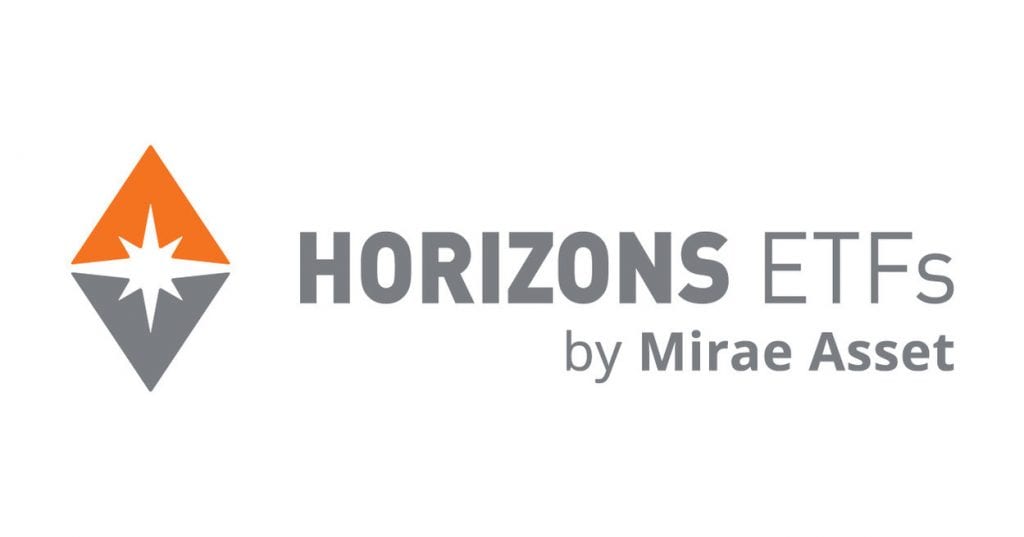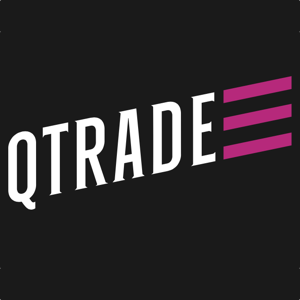Have you ever looked at the stock market and felt a pang of fear in the direction you thought it was heading?
Well, now there’s a way you can invest on how large that fear is by using VIX ETFs (in an indirect way, more on that below).
Check out the best VIX ETFs in Canada below to see if it’s a good fit for you. But first, we’ll explain how the VIX works.
What Is the Fear Index?
The CBOE Volatility Index (VIX) is a unique index that measures the expected volatility in the stock market based on S&P 500 Index options. The VIX index began in 1993, and in 2004, VIX futures and options contracts began trading on stock markets.
The VIX Index is often called the fear index because it is considered an indicator of investor confidence or fear in the market, therefore the level of investment risk.
The VIX index measures the short-term market volatility of the S&P 500 Index (SPX) option prices derived from a range of call-and-put options. VIX levels above 30 typically represent high volatility levels, while VIX levels below 20 represent low volatility.
Trading on VIX levels essentially allows traders to invest in market volatility regardless of the real-world direction of equity market price movements.
Should you invest In VIX ETFs?
Investing in VIX ETFs is a very speculative play. Many consider it almost like gambling with your investment capital because you aren’t buying any value-producing assets.
If you are a self-directed investor comfortable with the risks of losing some or all of your initial investment, you can consider investing in the VIX.
Remember that VIX ETFs do not necessarily reflect the VIX index itself. Rather, these funds attempt to emulate the effectively uninvestable index. The return pattern of VIX ETFs could differ drastically from that of the VIX index.
These ETFs are also heavily reliant on the VIX futures curve, and these funds see their positions decay over time.
The decay in their exposure leaves them with less money to roll into the next futures contracts when the current contract expires.
The process repeats itself and leads to several significant losses over the course of a typical 12 months, ending up with the funds almost always losing more than they gain in the long run.
Traders who know and understand these financial instruments typically consider them as very short-term tactical tools rather than long-term buy-and-hold assets. Traders tend to speculate with VIX ETFs. You will find short-term VIX ETFs that offer greater one-day sensitivity to the index than mid-term VIX ETFs do.
VIX ETFs are also not ETFs in the strictest sense, like most other ETFs. These also come in the form of exchange-traded notes (ETNs) and commodity pool structures.
Best VIX ETFs in Canada
Note because it is such an obscure index to invest in, there is only one Canadian VIX ETF, so I’ve included some American ones below:
- Horizons BetaPro S&P 500 VIX Short-Term Futures ETF (HUV.TO)
- ProShares VIX Mid-Term Futures ETF (VIXM)
- ProShares Short VIX Short-Term Futures ETF (SVXY)
- ProShares Ultra VIX Short-Term Futures ETF (UVXY)
- iPath Series B S&P 500 VIX Short-Term Futures ETN (VXX)
1. Horizons BetaPro S&P 500 VIX Short-Term Futures ETF (HUV)

- Ticker: HUV.TO
- Inception Date: December 15, 2010
- Assets Under Management: $20.09 million
- Management Expense Ratio: 1.00%
- Stock Price: $10.98
- YTD Return: -2.58%
Horizons BetaPro S&P 500 VIX Short-Term Futures ETF (HUV) is a fund designed to provide you with investment results by attempting to emulate the performance of the S&P VIX index.
Any US dollar gains or losses as a result of the fund’s investments will be hedged back to the Canadian dollar before fees, expenses, distributions, brokerage commissions, and other transaction expenses.
The idea behind the fund is to have a short-term hedge against market volatility spikes in the S&P 500 Index. It is an expensive fund to own due to the active strategy the fund manager uses to try and emulate the VIX index.
Horizons BetaPro S&P 500 VIX Short-Term Futures 2X Daily Bull ETF (HVU) was another short-term futures ETF that launched on the TSX alongside BetaPro HUV ETF, but it closed on June 5, 2018, due to the risks associated with the high-risk and speculative approach that VIX ETFs take.
It would have been the only other Canada-listed VIX ETF besides BetaPro HUV ETF.

- Ticker: VIXM
- Inception Date: January 03, 2011
- Assets Under Management: US$37.87 million
- Management Expense Ratio: 0.93%
- Stock Price: $16.45
- YTD Return: -3.55%
ProShares VIX Mid-Term Futures ETF (VIXM) seeks to provide you with investment results before fees and expenses that track the performance of the S&P 500 VIX Mid-Term Futures Index.
The fund is designed for seasoned investors who want to profit from increases in the expected volatility of the S&P 500 index as measured by the prices of VIX futures contracts.
Intended for short-term use, ProShares VIXM ETF’s performance has been historically negatively correlated to the S&P 500 returns.
The fund does not track the performance of the CBOE VIX Index directly, and you can expect its performance to differ drastically from the VIX index.

- Ticker: SVXY
- Inception Date: October 03, 2011
- Assets Under Management: US$267.18 million
- Management Expense Ratio: 0.95%
- Stock Price: $103.06
- YTD Return: 1.15%
ProShares Short VIX Short-Term Futures ETF (SVXY) seeks to provide investors with daily investment results corresponding to one-half the inverse of the daily performance of the S&P 500 VIX Short-Term Futures Index, before fees and expenses.
The fund is not essentially benchmarked to the VIX index, and you can expect it to perform very differently from the VIX.
The fund is designed for seasoned investors who want to try and profit from decreases in the expected volatility of the S&P 500 based on the prices of VIX futures contracts. Intended for short-term use, the actively managed SVXY ETF is a risky and high-cost fund.

- Ticker: UVXY
- Inception Date: October 03, 2011
- Assets Under Management: US$348.57 million
- Management Expense Ratio: 0.95%
- Stock Price: $8.295
- YTD Return: -4.67%
ProShares Ultra VIX Short-Term Futures ETF (UVXY) is a find that seeks to provide you with daily investment results that correspond to one and a half times the daily performance of the S&P 500 VIX Short-Term Futures Index before fees and expenses.
The fund is benchmarked to an index of VIX futures contracts, not the CBOE Volatility Index itself. It means that you can expect the fund to perform very differently from one and a half times the performance of the VIX index.
UVXY ETF is designed for seasoned investors who want to profit from increasing expected volatility in the S&P 500 based on the price performance of VIX futures contracts. Intended for short-term use, the fund is a volatile and high-risk financial instrument.
5. iPath Series B S&P 500 VIX Short-Term Futures ETN (VXX)

- Ticker: VXX
- Inception Date: January 19, 2018
- Assets Under Management: US$270.66 million
- Management Expense Ratio: 0.89%
- Stock Price: $15.515
- YTD Return: -2.51%
iPath Series B S&P 500 VIX Short-Term Futures ETN (VXX) is one of the biggest and best-performing VIX ETFs, even though it is technically structured as an ETN. VXX ETN is a 30-year ETN that holds first- and second-month futures contracts with a maturity date set for January 23, 2048.
It’s important to remember that VXX ETN does not represent a spot investment in the VIX. Rather, it is linked to an index that comprises VIX futures contracts.
The performance of the ETN is likely going to stray drastically from the real-time performance of the VIX index. The high-risk and high-volatility fund is also expensive to own.
Investment Strategies for VIX ETFs
While VIX ETFs can be a risky play in the market, several investment strategies can be employed to navigate the complexities associated with them.
- Short-Term Speculation: Given the decaying nature of VIX ETFs, many traders use them for very short-term trades to capture quick market moves. Keeping an eye on current events that might spike market fear can be an opportunity to capitalize on heightened volatility.
- Portfolio Hedging: Some investors use VIX ETFs as a hedge against their broader portfolio. When the market shows signs of increased volatility or a downturn, VIX ETFs tend to rise, potentially offsetting some losses from equity positions.
- Diversification: Adding a small allocation of VIX ETFs to your portfolio can add diversification, especially if you believe that the market is becoming complacent and a spike in volatility is on the horizon.
How Do You Buy VIX Calls?
Purchasing VIX call options contracts that give you the right to buy the VIX could be considered a good hedge against downturns in the S&P 500 Index than buying SPX put options, which give you the right to sell the VIX instead of buying it.
VIX trades within a given range and bottoms out around ten. If it were to ever go to zero, it would mean that the expectation was for zero daily movements in the SPX.
The VIX index has spiked in the past when the SPX crashed, but it cannot stay consistently high because it would mean that the market expectation was for significant changes over an extended timeframe.
A fixed trading range, no matter how volatile, effectively means that VIX options offer a good opportunity for traders to speculate. However, the value of the options is derived from the forward value using current and next month’s options contracts, entailing more substantial volatility than other financial instruments.
The VIX is a very risky index to invest in due to its capacity to decline just as quickly as it rises, leading to immense financial losses for investors.
How Can I Get Long VIX Index?
Like with all indexes, you cannot buy the VIX directly. Instead, you can take a position in VIX and invest in volatility through VIX-based Exchange-Traded Products (ETPs) like VIX ETFs and VIX ETNs.
If you want to get exposure to the long VIX index, the VelocityShares Daily Long VIX Short-Term ETN was an offering that you could consider, but the ETN has been delisted, and further issuance has been suspended.
How To Buy The Best VIX ETFs In Canada
The cheapest way to buy ETFs is from discount brokers. My top choices in Canada are:

- 105 commission-free ETFs to buy and sell
- Excellent customer service
- Top-notch market research tools
- Easy-to-use and stable platform

- Stock and ETF buys and sells have $0 trading fees
- Desktop and mobile trading
- Reputable fintech company
- Fractional shares available
To learn more, check out my full breakdown of the best trading platforms in Canada.
Final Thoughts
If you are an investor considering investing in the best VIX ETFs in Canada, you should understand that these are not great proxies to track the performance of the spot VIX.
All these funds tend to perform very differently from the VIX index. Some of these ETFs and ETNs may rise and fall along with VIX, but the rate of their price movements and the lag can make it challenging to identify the entry and exit points to make profitable trades for even the most experienced traders.
That said, market volatility investments are best suited for investors with a short time horizon who can move quickly to change their positions if the market turns against them. ETFs typically offer a hands-off method to invest in a group of assets – something you do not get with VIX ETFs.
If you are looking for a safer and hands-off exposure to the performance of the US stock market, take a look at my list of the best S&P 500 ETFs in Canada for financial instruments that you could consider adding to your portfolio.





